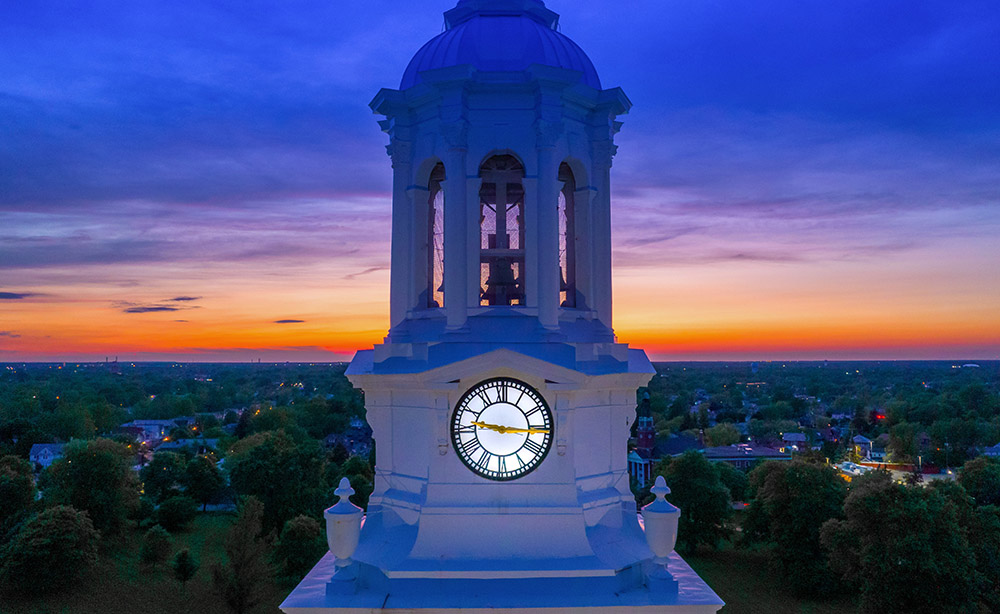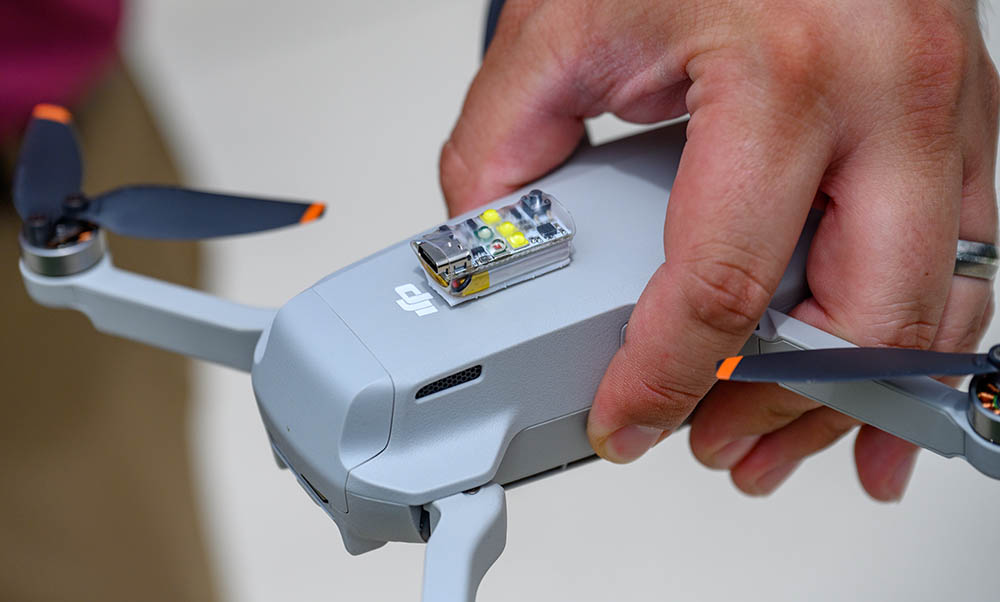
UPAA Blog 2023-24 #6 11/16/23 (photo above by Doug Levere)
This is the third article in a series on the latest tech and laws regarding drones.
•The first article: A side-by-side comparison of the still photo results from three popular DJI drone options. (TL;DR? They're all quite good.)
•The second article: A step-by-step guide to getting permission to fly in a stadium TFR. (TL:DR? Not as difficult as you might think, but be thorough with your paperwork!)
This article deals with the Part 107 rules for flying at night. TL;DR? Drone pilots licensed under Part 107 are allowed to operate at night under two conditions:
•They complete an online recurrent training or updated initial knowledge test (Plain English: if your license is current, you've already done this.)
•Their drones are equipped with anti-collision lighting visible for at least three (3) statute miles and are flashing at a rate sufficient to avoid a collision. (Plain English: Can you spend 20 bucks and do you have a working knowledge of adhesives?)
As long as you meet these conditions and you are in compliance with other regulations set forth within Part 107, you are, legally speaking, able to fly your drone at night. (You may have your own campus policies in addition.) Many UPAA members have been exploring the opportunities this presents. Read on...
Justin Torner, University of Iowa
There are no flight restrictions in our airspace, so I don’t have to file for a waiver. When I renewed my certification, this training was part of it. I followed the lighting rule and attached a Lumecube anti-collision light.
We as a department have done night flying for official university business before. It's definitely cool and unnerving at the same time, but the images turned out awesome and have been used as new fresh takes in lots of publications that have seen the same old Old Capitol pictures over and over again.
Doug Levere, University at Buffalo
Before I took the additional test for the night certification I was sometimes flying to the limit of “you can fly during daylight or in twilight (30 minutes before official sunrise to 30 minutes after official sunset, local time) with appropriate anti-collision lighting.” I was excited to see what was possible from looking at what other drone photographers had been achieving in night and dusk photography.
Being a purist and interested in getting some long car light trails I started with 8 second exposures and 100ASA. They looked great on my phone but some were not fully sharp when looked at closely. I tried shorter exposures too. 2-second exposures and shorter (depending on the wind) almost always are quite sharp with my DJI Air 2S. I have a local friend that shoots with high ASA around 2000 at full night shots. He gets some pretty cool results. I have not tried it as I like the overall sharper image with low grain. Some of these shots end up as murals around campus and I like a sharper image overall.
For the Air2S I find it has an amazing ability to be able to open up the shadows and save the highlights of these sunset and after sunset images, better than my Canon 5D Mark IV for sure. Video can be more of a challenge. You may have to try more settings to get good quality especially at full night which I find harder than dusk and sunset.
Amanda Pitts, Grand Valley State University
Having the ability to fly at night has opened a world of creative possibilities. The photo of the fountain from above was from an evening where we asked our facilities team to turn off the lights in the middle of campus so we could experiment and play with different equipment and techniques. We also attempted to light a sculpture with a drone and photograph it from the ground (light painting via drone light) but the light wasn’t bright enough to do what we wanted and it will take a lot of post processing to make it useable. But we learned a lot and hope to do more night photography experimenting in the future!
Michael Caterina, Indiana University South Bend
I’ve flown after dark on a few occasions and the biggest difference is equipping the drone with the lights visible for 3SM. I purchased one off of Amazon and used a 3M Command strip to attach it, so I could remove it and not leave a film or velcro on the top of the drone.
The light is small enough that it doesn’t mess with the center of gravity of the drone, when placed near (what I think) was that point.
For the flights I’ve done I have gone out during the day and scoped out the area to make sure there weren’t any power lines or guy wires in my flight path. Any deviations I made were well away from all of those obstacles.

For visual line of sight, the light actually helps quickly locate the drone. Sometimes when I’m a bit further out, looking up from the controls and finding the aircraft can take a second, but with the light it can help! In the visual observer role, scanning for lights is really all you can do.
I’m amazed with the quality of the images. Up to 2-second exposures were sharp on the calm nights I photographed.
"What fish swims only at night? A star-fish!" Thanks for reading the UPAA Blog. Are you sick of drones? Are you thinking, "Why doesn't the blog do an article on ...?" 'We wanna hear from you! Email editor Matt Cashore, mcashore@nd.edu. And, of course, follow UPAA on Instagram!